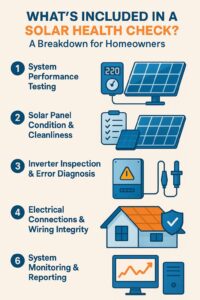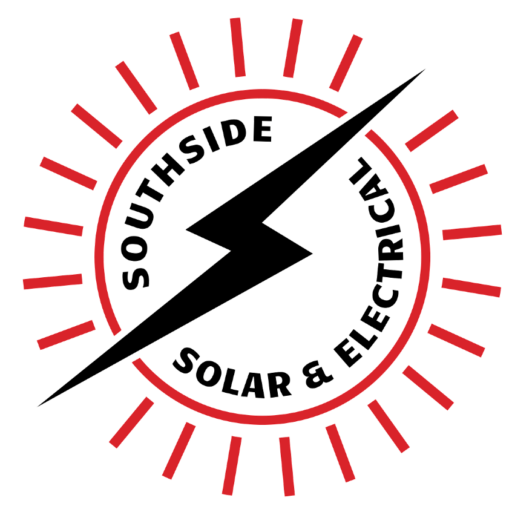A solar power system is a long-term investment that depends on regular upkeep to maintain peak performance. Over time, exposure to heat, dust, moisture, and electrical stress can cause wear and inefficiencies. A solar health check gives homeowners a clear understanding of how their system is performing, identifies hidden faults, and ensures ongoing safety and compliance. Below is a detailed breakdown of what’s covered during a professional inspection.
1. System Performance Testing
Performance testing is the foundation of a solar health check. Technicians measure system output against the expected generation levels based on your Solar Power Systems Perth setup, panel orientation, and local sunlight exposure. Using diagnostic tools such as IV curve tracers, they analyse voltage and current flow through each string of panels.
Technicians also evaluate inverter efficiency, system losses, and compare results with historical production data from your monitoring software. This helps pinpoint performance drops caused by partial shading, ageing components, or incorrect configuration. Catching these issues early ensures your energy yield remains consistent and optimised year-round.
2. Solar Panel Condition & Cleanliness
Solar panels are exposed to dust, debris, bird droppings, and environmental contaminants that can reduce light absorption. During an inspection, panels are visually checked for cracks, discolouration, hotspots, and water ingress — all of which can lead to reduced performance or long-term degradation.
If cleaning is necessary, technicians will advise whether professional cleaning or DIY maintenance is more appropriate. They also examine the surrounding environment for potential shading from trees, new constructions, or roof features that might limit sunlight exposure. Keeping panels clean and unobstructed maximises efficiency and protects your investment from unnecessary strain.
3. Inverter Inspection & Error Diagnosis
The inverter is the system’s central component, converting direct current (DC) from panels into alternating current (AC) for household use. Because of its high workload, the inverter is often the most common point of failure. During a solar health check, your Solar Inverters Perth are thoroughly inspected for internal faults, error codes, and physical wear such as corrosion or dust build-up inside ventilation grilles.
Technicians also update inverter firmware when available, ensuring compatibility with new monitoring systems and grid standards. They verify communication links to monitoring apps or data loggers, helping homeowners track performance remotely. A functional, up-to-date inverter ensures efficient energy conversion and accurate reporting of production data.
4. Electrical Connections & Wiring Integrity
Faulty wiring or loose electrical connections can cause dangerous arcing, overheating, or energy losses. During the inspection, every cable, connector, and isolator is checked for integrity, insulation damage, and signs of corrosion or water ingress.
Technicians verify that DC cabling is correctly rated and that all fuses and breakers are functioning properly. They also assess grounding and bonding to ensure electrical safety in case of surges or faults. These checks reduce fire hazards and guarantee compliance with Australian electrical standards, giving homeowners peace of mind that their system remains safe and stable.
5. Roof Mounting & Structural Security
Solar panels are mounted under high tension, and over time, weather exposure can cause bolts, brackets, and rails to loosen or corrode. Inspectors check the condition of the racking and ensure panels are securely fastened to avoid movement during strong winds.
Waterproof seals and flashings are examined for integrity, preventing roof leaks that can lead to costly structural damage. Any signs of rust, wear, or compromised hardware are documented and replaced where necessary. By keeping the mounting system in optimal condition, homeowners protect both their solar investment and their roof’s longevity.

6. System Monitoring & Reporting
Modern solar systems often include monitoring software that tracks real-time performance. However, many homeowners are unaware of how to interpret this data effectively. A health check includes an analysis of system logs and monitoring data to confirm that your panels are performing evenly and that no strings or modules are underperforming.
You’ll receive a detailed inspection report outlining key findings — including generation capacity, system efficiency, and recommendations for improvement. This report acts as a maintenance record for future servicing and can assist in warranty claims if manufacturer defects are discovered. Some technicians also offer comparisons of your system’s performance against similar systems in your region for reference.
7. Safety & Compliance Verification
Electrical and structural safety are core parts of a solar health check. Technicians confirm that all safety labelling, isolators, and circuit breakers meet Australian Standards, including AS/NZS 5033 and AS/NZS 4777. They also verify earthing continuity, ensuring that all metal frames and conduits are safely grounded.
Inspections often include thermal imaging to detect overheating components or potential fire risks that aren’t visible during a visual check. Ensuring your system remains compliant with the latest regulations also protects you in the event of warranty claims or insurance inspections. A compliant system guarantees both operational safety and peace of mind.
Conclusion
A professional solar health check provides homeowners with a complete picture of their solar system’s condition. It goes beyond cleaning — it’s a detailed technical evaluation that ensures safe operation, regulatory compliance, and long-term efficiency.
Regular inspections (ideally every 12 months) can identify minor faults before they become major repairs, extending the lifespan of your panels, inverter, and cabling. For Perth homeowners, scheduling a solar health check with an experienced technician ensures your system continues to deliver reliable, cost-effective, and environmentally friendly energy for years to come
